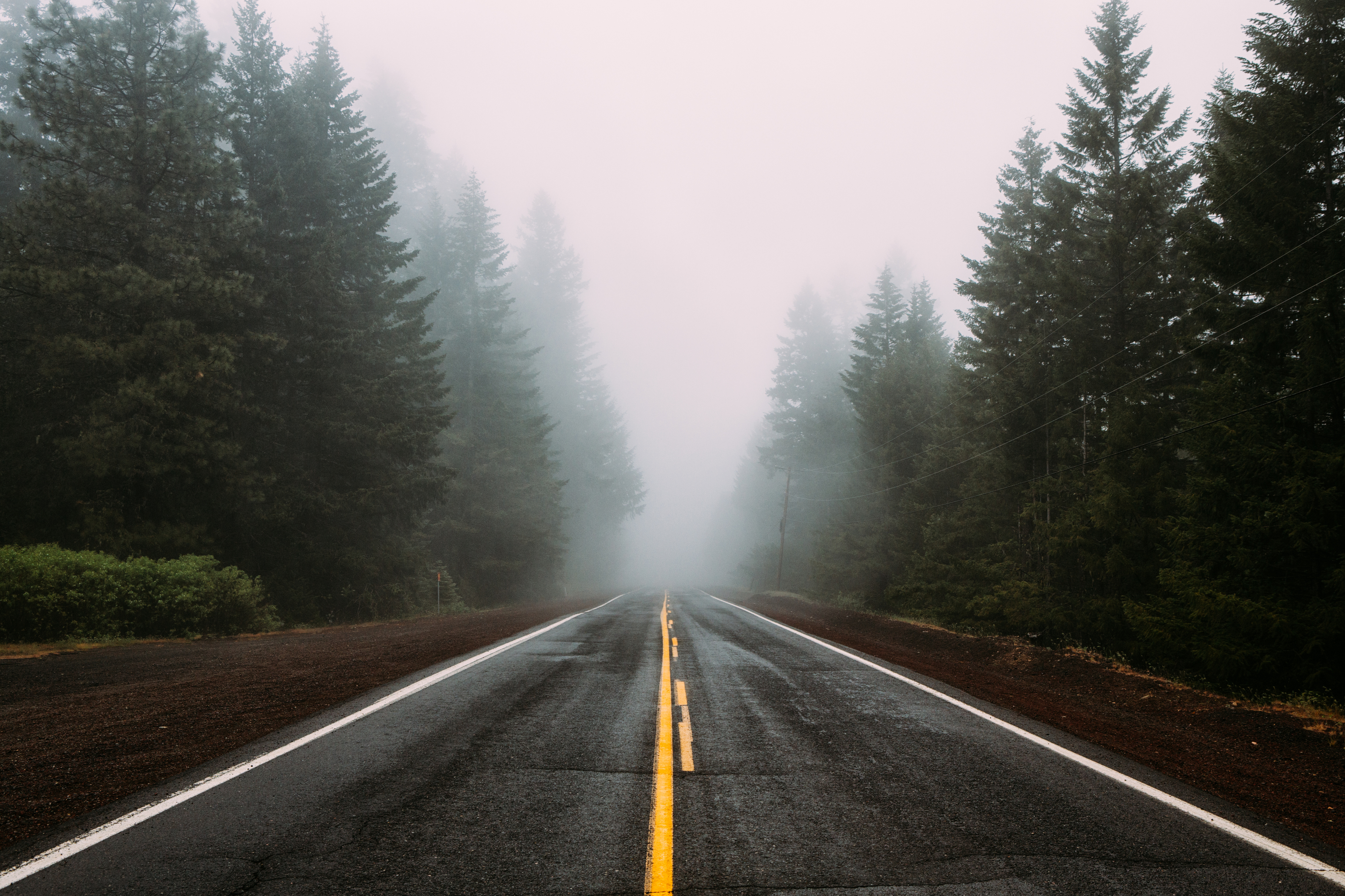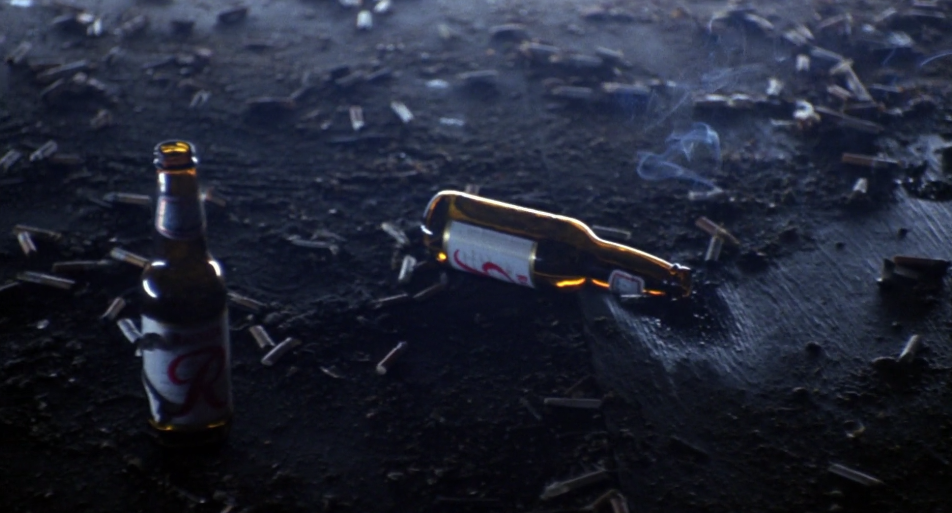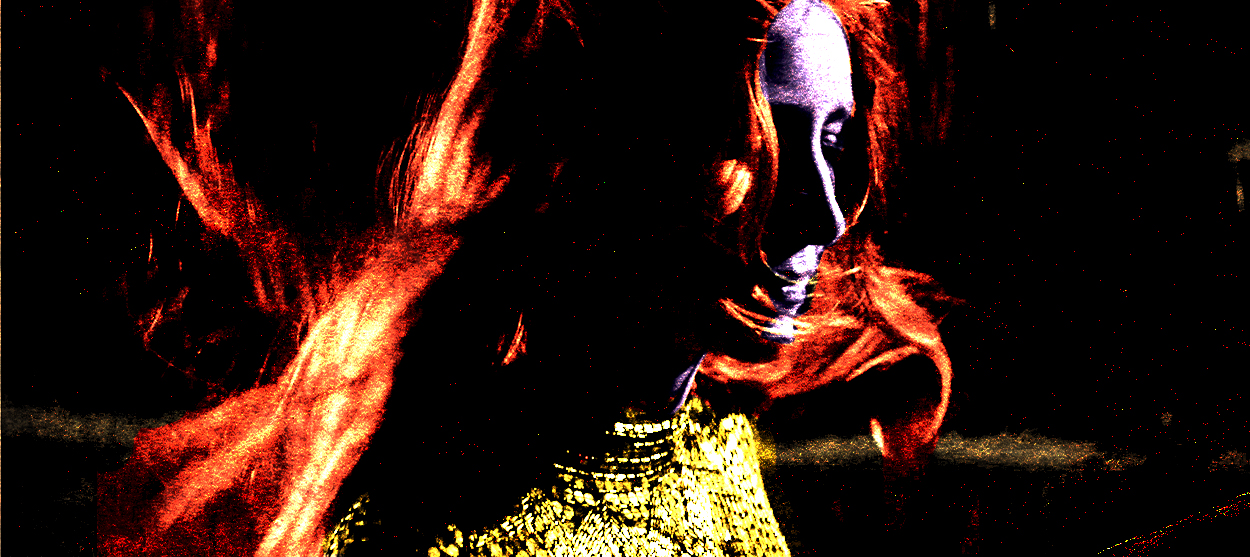The scariest thing about Twin Peaks is the Pacific Northwest
"There's a sort of evil out there"


For over half the year in the Pacific Northwest, you live shrouded in darkness. Located farther north than Toronto, Montreal, or Maine, Washington State sees the sun dip below the horizon just after 4 p.m. ahead of the longest night of the year. Sixty-two percent of the days are grey and overcast, the sky covered by thick layers of cloud and mist. While Los Angeles and New York City may be the shadowy epicenters for American crime dramas and noir, it is fitting that you look to the Pacific Northwest when you want to find monsters.
Twenty-seven years ago, director David Lynch did just that. Although the town of Twin Peaks is described as being "five miles south of the Canadian border, 12 miles west of the state line" — placing it somewhere in Pend Oreille County, Washington — the TV show features a bewildering amalgam of geographies including the Puget Sound region and the forests surrounding Los Angeles.

But what it lacks in cartographic precision, Twin Peaks makes up in its use of the general, ever-present darkness of the Pacific Northwest. This is not a version of small town America that could exist in the South or the Midwest. With kitschy art, mossy trailer parks, and looming waterfall, Lynch created a town that does not need to peer deeply into the darkness between the Douglas firs to see something looking back.
The Week
Escape your echo chamber. Get the facts behind the news, plus analysis from multiple perspectives.

Sign up for The Week's Free Newsletters
From our morning news briefing to a weekly Good News Newsletter, get the best of The Week delivered directly to your inbox.
From our morning news briefing to a weekly Good News Newsletter, get the best of The Week delivered directly to your inbox.
"There's a sort of evil out there," Sheriff Harry S. Truman warns Agent Dale Cooper early on. "Something very, very strange in these old woods. Call it what you want. A darkness, a presence. It takes many forms but ... it's been out there for as long as anyone can remember and we've always been here to fight it."
Even as Truman foreshadows the possessive, demonic spirit of Bob with his warning, he does so leaving open the possibility that the out there itself is the monster. Every transitional exterior shot serves to build upon the inscrutable mystery of the Pacific Northwest itself.

The Northwest fosters its own real-life nightmares, from its seemingly disproportionate number of serial killers to mysterious disembodied feet washing up on its shores to myths about Bigfoot and UFOs over Mt. Rainier. Having grown up 20 miles from the town of North Bend, Washington — where the waterfall from the opening credits and the RR Diner are located — I was as afraid of the gloomy woods and mountains as a child as I was magnetized to them.
Twin Peaks is not unappreciative of this allure. "Sheriff, what kind of fantastic trees have you got growing around here?" Cooper immediately wants to know. The opening credits of the series, too, feature an almost ironic indulgence in the quainter parts of Northwestern scenery, although they end on the ominous crash of water at the foot of the falls.
A free daily email with the biggest news stories of the day – and the best features from TheWeek.com

But Lynch's adherence to surrealism makes the Pacific Northwest more than just a pretty backdrop — its startling, unrelenting darkness is also a representation of the psyche of its characters.
"Richard Hoover, the production designer of all the series' episodes except the pilot, created a look for the show in which, he says, the concepts of inside and outside were conflated," writes Martha Nochimson in an essay for Film Quarterly. "A massive use of wood gives an outside feeling to the interiors. The interiors burgeon with dead animals and their parts — horns, shells — and nature drawings that are often photographed as if they were theatrical backdrops for the action."
In the Log Lady's introduction to the pilot, viewers are similarly clued in to search beyond the town itself for the answers to questions: "There are many stories in Twin Peaks," the Log Lady says. "Some of them are sad, some funny. Some are stories of madness, of violence. Some are ordinary. Yet they all have about them a sense of mystery. The mystery of life, sometimes the mystery of death. The mystery of the woods, the woods surrounding Twin Peaks. To introduce this story, let me just say it encompasses the all."

The Twin Peaks prequel, Fire Walk With Me, explores a different corner of the Pacific Northwest, this one a dark and disturbing foil to the (at least superficially) cheery town of Twin Peaks. The fictional town of Deer Meadow, Oregon, has no veil separating its underbelly from its surface, and the town's twisting roads, dilapidated trailer park, and crumbling diner all play a foundational role in illustrating its atmosphere.
Later, in one of the film's strongest sequences, Laura Palmer and Donna Hayward get drunk in Canada on what was at the time locally brewed Rainier beer. The last shot of the harrowing scene is a languid track through smoldering cigarettes and discarded bottles on the barroom floor. While the moment is a paradoxically beautiful portrait of ruin and filth, Lynch continues to assure it is a specifically Northwestern one.

For the third season of the show, Lynch reportedly returned to the North Bend area of Washington for six weeks of shooting. One reporter with prying eyes wrote that while he "was hoping for a glimpse of Kyle MacLachlan," all he ultimately found while searching for the shoot "was a rotting deer leg on the forest floor," adding that "somehow ... that seemed like an authentic Twin Peaks experience."
He hits on a noteworthy point: For all its fictionalizations, Twin Peaks and the surrounding wilderness could practically be any spot in the Cascade Mountains.
By returning to the Pacific Northwest, Lynch brings his fans back to a place outside the reach of modern society, a place you could still visit yourself if you were to book a plane to Seattle and then drive east 30 or 40 miles. A place with lonely mountain roads and logging trucks and deep evergreen forests, a place where everyone seems to know everyone else and a taxidermied fox still counts as classy decor. A place where you get the pervasive, gnawing sense that there is something out there that is bigger than you, older than you, watching.
A place both wonderful and strange.
Jeva Lange was the executive editor at TheWeek.com. She formerly served as The Week's deputy editor and culture critic. She is also a contributor to Screen Slate, and her writing has appeared in The New York Daily News, The Awl, Vice, and Gothamist, among other publications. Jeva lives in New York City. Follow her on Twitter.
-
 Received a windfall? Here is what to do next.
Received a windfall? Here is what to do next.The Explainer Avoid falling prey to ‘Sudden Wealth Syndrome’
-
 How to save more for retirement next year
How to save more for retirement next yearthe explainer Secure yourself a suitable nest egg
-
 7 hot cocktails to warm you across all of winter
7 hot cocktails to warm you across all of winterthe week recommends Toddies, yes. But also booze-free atole and spiked hot chocolate.
-
 Walter Isaacson's 'Elon Musk' can 'scarcely contain its subject'
Walter Isaacson's 'Elon Musk' can 'scarcely contain its subject'The latest biography on the elusive tech mogul is causing a stir among critics
-
 Welcome to the new TheWeek.com!
Welcome to the new TheWeek.com!The Explainer Please allow us to reintroduce ourselves
-
 The Oscars finale was a heartless disaster
The Oscars finale was a heartless disasterThe Explainer A calculated attempt at emotional manipulation goes very wrong
-
 Most awkward awards show ever?
Most awkward awards show ever?The Explainer The best, worst, and most shocking moments from a chaotic Golden Globes
-
 The possible silver lining to the Warner Bros. deal
The possible silver lining to the Warner Bros. dealThe Explainer Could what's terrible for theaters be good for creators?
-
 Jeffrey Wright is the new 'narrator voice'
Jeffrey Wright is the new 'narrator voice'The Explainer Move over, Sam Elliott and Morgan Freeman
-
 This week's literary events are the biggest award shows of 2020
This week's literary events are the biggest award shows of 2020feature So long, Oscar. Hello, Booker.
-
 What She Dies Tomorrow can teach us about our unshakable obsession with mortality
What She Dies Tomorrow can teach us about our unshakable obsession with mortalityThe Explainer This film isn't about the pandemic. But it can help viewers confront their fears about death.
